Betel nut (Areca catechu L.) extract toxicity on the kidney and liver of white rats (Rattus norvegicus)
30/06/2020 Views : 272
ANAK AGUNG GDE ARJANA
INTRODUCTION
The
use of synthetic drugs cannot be separated from new problems they give,
including environmental pollution – drug residues in livestock product that often
cause resistance – which lead to decrease in the effectivity of the drugs.
Medication using herbal medicine is one of the alternatives chosen to reduce
the adverse effects caused by synthetic drugs. Betel nut (Areca catechu L)
usually used as an alternative drug such as anthelmintic and others. Betel nut
consists of alkaloids (arecoline, arecaidine, arecaine, guvacoline, guvacine,
and isoguvacine), red tannin, and fat. Arecoline is believed to have a
beneficial effect as anthelmintic. Toxicity in herbal medicine may
occur when given excessively. As regard with prolonged use, herbal medicine can
accumulate in tissues or organs such as liver and kidneys which can damage the
organs. Liver is the biggest gland in the body which has many
functions, one of them is drug metabolism. The detoxification process from
various components of drugs produces components with higher toxicity which
often cause pathological changes. Histopathological assessment, GOT
serum, and GPT serum tests are generally used to determine liver health. Kidney is an essential organ in the body, which has functions to discard
metabolism wastes and poison in the form of urine. The kidney is vulnerable to
the effect of chemical compounds because of its role in filtering metabolism
residues from the blood; thus the possibility of pathological changes is very
high.5 Histopathological examination, creatinine, and BUN test can
be performed to determine kidney function.6 The in vivo
administration of betel nut in pigs infected with Ascaris suum showed no
pathological changes in liver, kidney, brain, and heart.
METHODS
Extraction
Five
hundred grams of simplicial powder was macerated using 95% ethanol in a
container, then sealed and let them for three days. They were protected from
light while repeatedly stirred. After three days, the solution was strained,
and the crude extract was squeezed. Twenty-five parts of 1.3L (ethanol 95%)
solvent was added to the crude extract then mixed and strained until it obtains
100 parts. The container was closed then placed in a cool place and covered
from the light for two days. The deposit was separated, and the liquid extract
was obtained. Afterward, the extract was evaporated using rotary evaporator at
30-40°C and concentrated using a water bath to get the concentrated extract of
betel nut.
Toxicity
Toxicity test using 20 white rats (Rattus
norvegicus). Betel nut extract was applied for three weeks.
Histopathological
examination of liver and kidney
The
making of histopathological preparations was conducted according to Kierman method.8
The liver was fixated using 10% neutral buffered formalin and then cut.
Afterward, the dehydration process was conducted using 70%, 80%, and 90%
alcohol absolute I and absolute II. Purification was done using xylol and
placed into paraffin blocks which were cut using microtome. The results of the
cut next were floated in the water bath. The preparation was placed in object
glass and stained with HE (Hematoxyline and Eosin). Finally, those specimen was
examined under the microscope.
GOT
serum, GPT serum, creatinine serum, and BUN examination
Both GOT and GPT
serum was examined using Reflovet Plus. So did both creatinine serum and BUN.
The first step was to place sample drops on the kit. The blood was taken by
using pipette according to pipette size, then put onto GOT serum kit (GOT) to
measure GOT serum level and GPT kit (GPT) to measure GPT serum level in blood.
As against the same procedure, the creatinine kit (CREA) measured creatinine
level and also BUN kit (BUN) measured urea level in blood. The second step was
the kit insertion test. Insert GOT and GPT kits as well as CREA and BUN kits
into measurement space of Reflovet Plus and close the area. The third step
showed the results. After 2-3 minutes, Reflovet Plus will print and confirmed
the findings.
RESULTS AND DISCUSSION
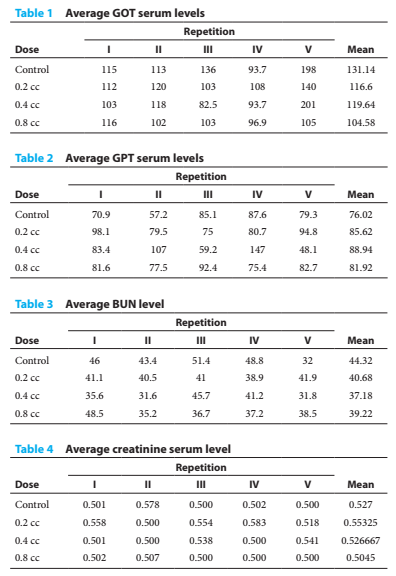
The GOT serum results of the rats who administered with betel nut extract at dose 0.2 ccs, 0.4 ccs, and 0.8 ccs were showed in Table 1. So did GPT serum results were confirmed in Table 2. The results of ANOVA in both GOT and GPT serum mean levels between control and each dose showed insignificant results (p > 0.05). The results of BUN level in white rats who given with betel nut extract at dose 0, 0.2 ccs, 0.4 ccs, and 0.8 ccs were showed in Table 3. So did the results of creatinine serum level were showed in Table 4. There was no difference between control and treatment (Figure 1, 2, 3, 4).
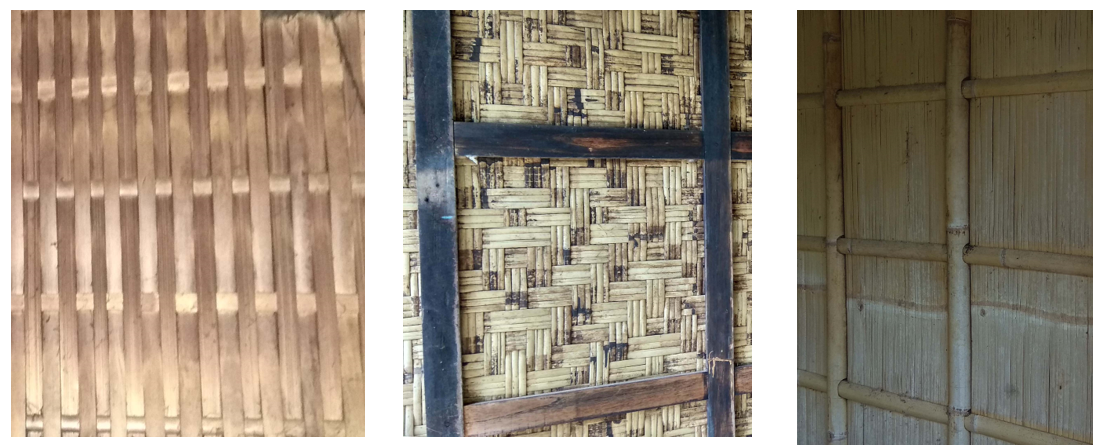

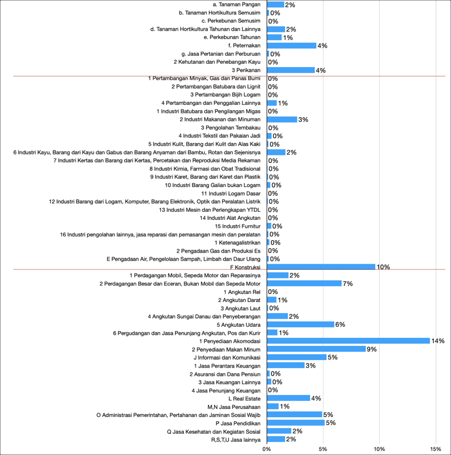
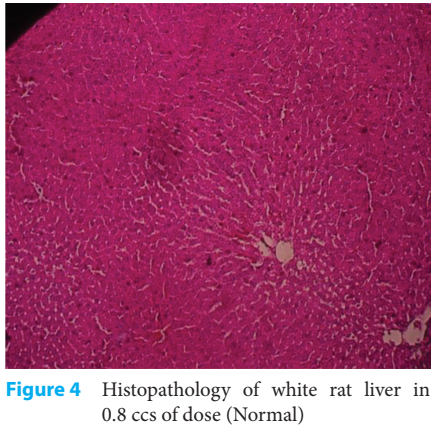
Liver structure in control and treatment groups
(0.2 ccs, 0.4 ccs, 0.8 ccs) were in normal condition. Entire treatment groups
did not cause a toxic effect. Liver is a vital organ with various functions in
the metabolism process, making this organ is often exposed to chemical
substances. Those substances will undergo detoxification and inactivation to
render them harmless for the body.15 In the liver, various important
processes occur, which include energy storing, protein formation, and poison or
drug neutralization. Drugs will undergo metabolism in the liver and chemical
structure will change, which is catalyzed by an enzyme produced by hepatocyte. microsome
cells (biotransformation). Drugs are transformed into metabolites which are
less active.16 A previous in vivo study of betel nut administration
in pigs with Ascaris suum infection to determine therapeutic results and acute
and subacute toxicity tests showed no pathological changes in the liver,
kidney, brain, and heart. Tannin in betel nut acts in the
anti-inflammatory activity and can proceed as hepatoprotective.17
According to the histopathological results of white rat kidney, there were no
differences betweencontrol and treatment (Figure 5-8).
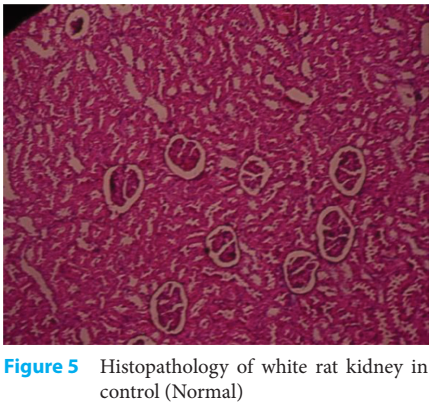
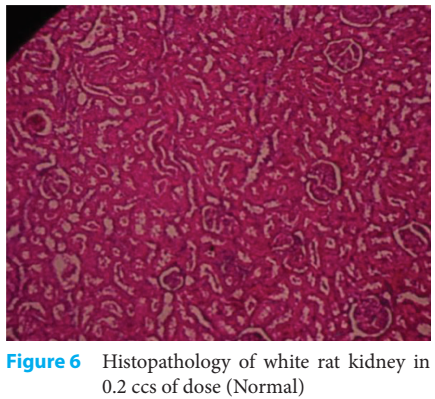

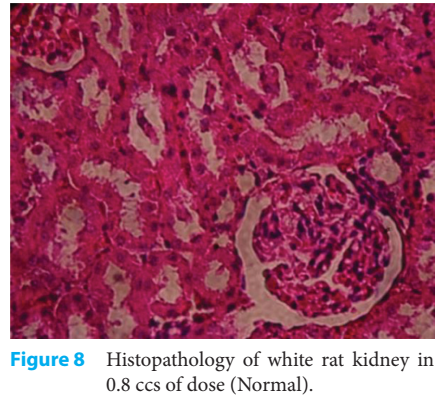
Generally, kidney tissue structures in control and treatment (0.2 ccs, 0.4 ccs, and 0.8 ccs) were in normal condition. The entire procedure did not cause a toxic effect. Kidney is the main organ in the body, which functions in discarding metabolism waste and poison in the form of urine. It is vulnerable to the effect of chemical substances because kidney acts in filtering metabolism residue from the blood. Therefore, the possibility of pathological changes is very high.5 Indian Pam Masala containing betel nut for 16 to 90 days in white rats did not cause a harmful toxic effect to the kidney, heart, spleen, and liver.18 Histopathological study of betel nut extract administered orally with different doses for four weeks did not cause a toxic effect to the kidney
CONCLUSION
Oral-administered betel nut (Areca catechu L.) extract with various doses, i.e., 0.2 ccs, 0.4 ccs, and 0.8 ccs did not cause a toxic effect in both kidney and liver of white rats (Rattus norvegicus).
Source: Arjana, A. A. G., Sukada, I. M., &
Suratma, N. A. Betel nut (Areca catechu L.) extract toxicity on the kidney and
liver of white rats (Rattus norvegicus). Bali Medical Journal (Bali Med J) 2019, Volume 8, Number 2:
444-448
